we make our own histories was a temporary exhibition in the Riding School from 28th February to 5th August 2024.
By Courtney McKee
The exhibition features five works co-created by the Museum’s Artist-in-Residence from 2021 to 2024, Anthony Haughey, in collaboration with over 500 people across the island of Ireland.
The residency came at the end of the Decade of Centenaries from 2012 to 2023. This was a wide-reaching governmental programme that commemorated the events leading up to the emergence of Ireland as a nation-state from 1912 to 1923.
In light of the Decade, Haughey considers questions surrounding Ireland’s contemporary identity. His socially engaged work addresses not only the Ireland of today, but what the Ireland of the future might look like and how we might shape its course to create a more inclusive, pluralistic, and equitable society for all.
With these resonances in mind, the Education & Outreach Department sought to create a learning resource for senior cycle Visual Arts and Politics & Society students based on the exhibition. Today, Assistant Education Officer Diarmuid Bolger is working with videographer Eamonn Murphy to film the final footage for the video.
Let’s follow along!
1st Interview - 10am

With the lights on and the cameras rolling, the stage is set for the first interview of the day.
Diarmuid and Eamonn are interviewing Jonathan Cummins, a co-curator of the exhibition, on his reflections about the pieces featured and the process of putting the exhibition together.
.jpg)
Eamonn holds a post-interview debrief with Jonathan.
2nd Interview – 11am
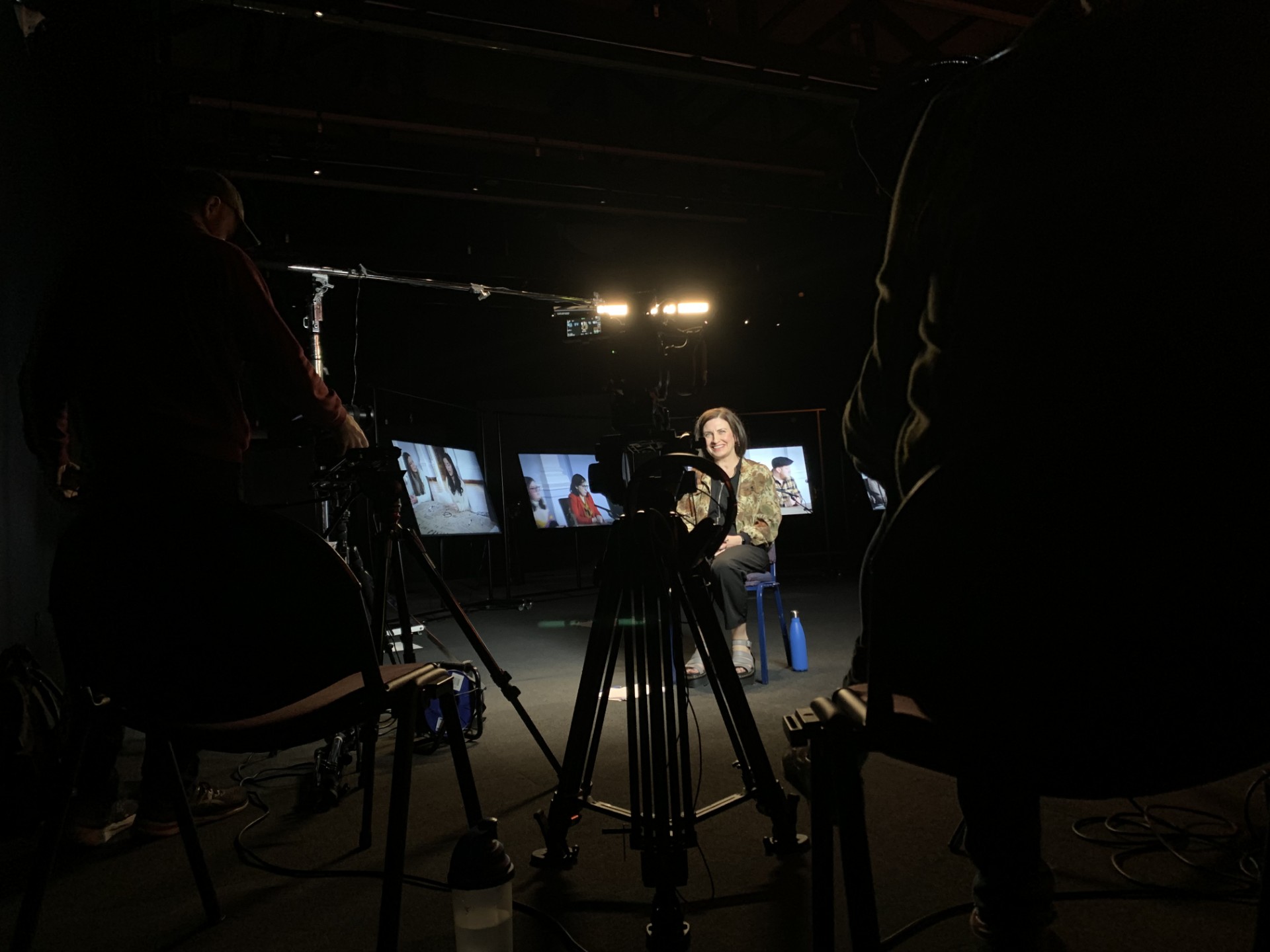
The same questions are posed to Maolíosa Boyle, the other co-curator of the exhibition. Maolíosa works as the Executive Director of RUA RED, an arts centre in Tallaght.
As Eamonn points out, it’s not easy being in the hot seat. The camera is pointing directly at you, a relentless black eye that records your every word, but that you can’t look at lest you break the fourth wall. The lights are blinding and you can hardly see the faces of the people asking you the questions.
The dark walls of the exhibition only accentuate this effect. In fact, Eamonn advised our interviewees not to wear black as they would fade into the background and appear like floating heads.
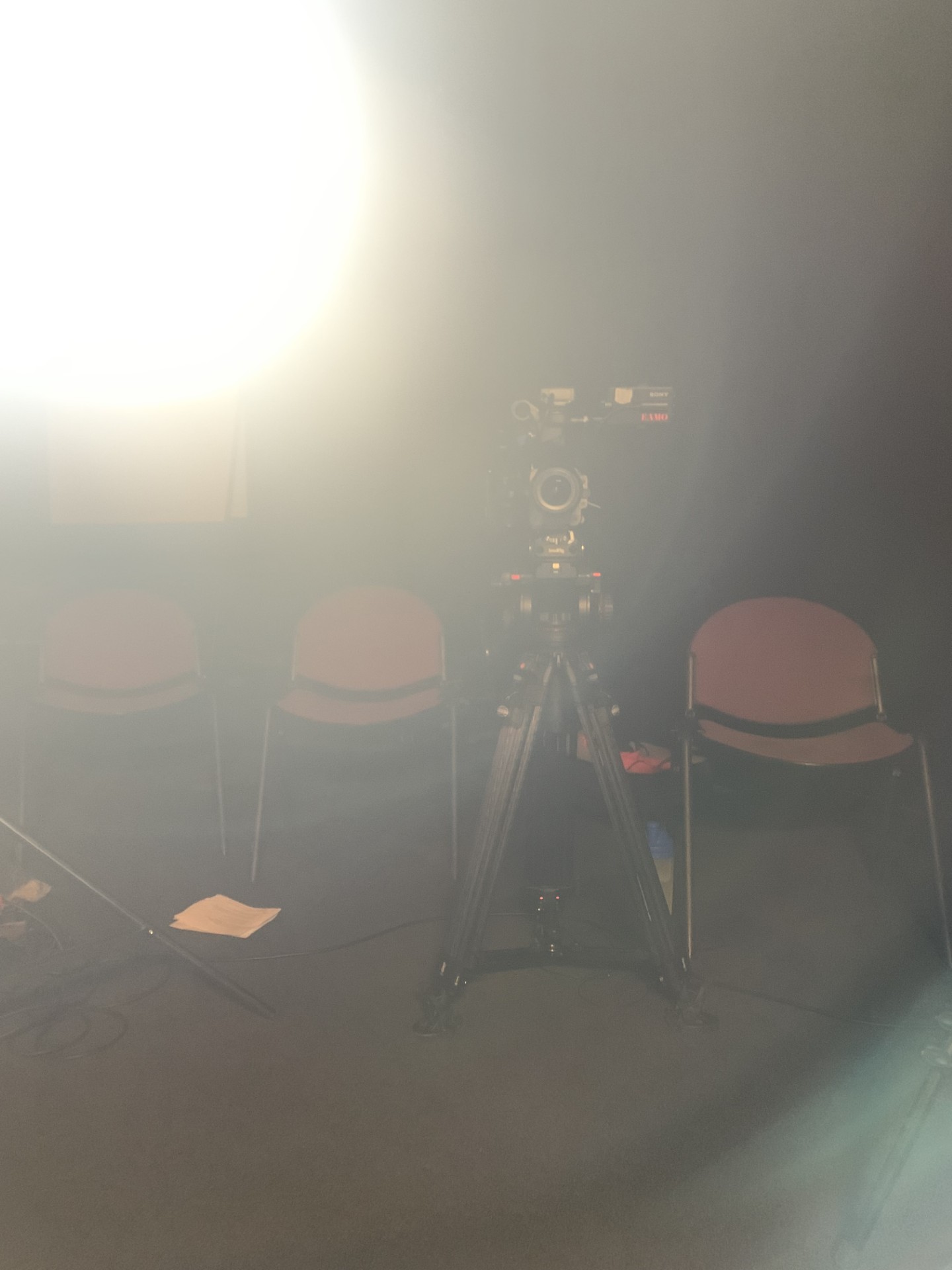
What the interviewee sees.
Despite these difficulties, our first two interviewees fly through their questions, and we can soon take a quick coffee break.
3rd Interview - 12pm
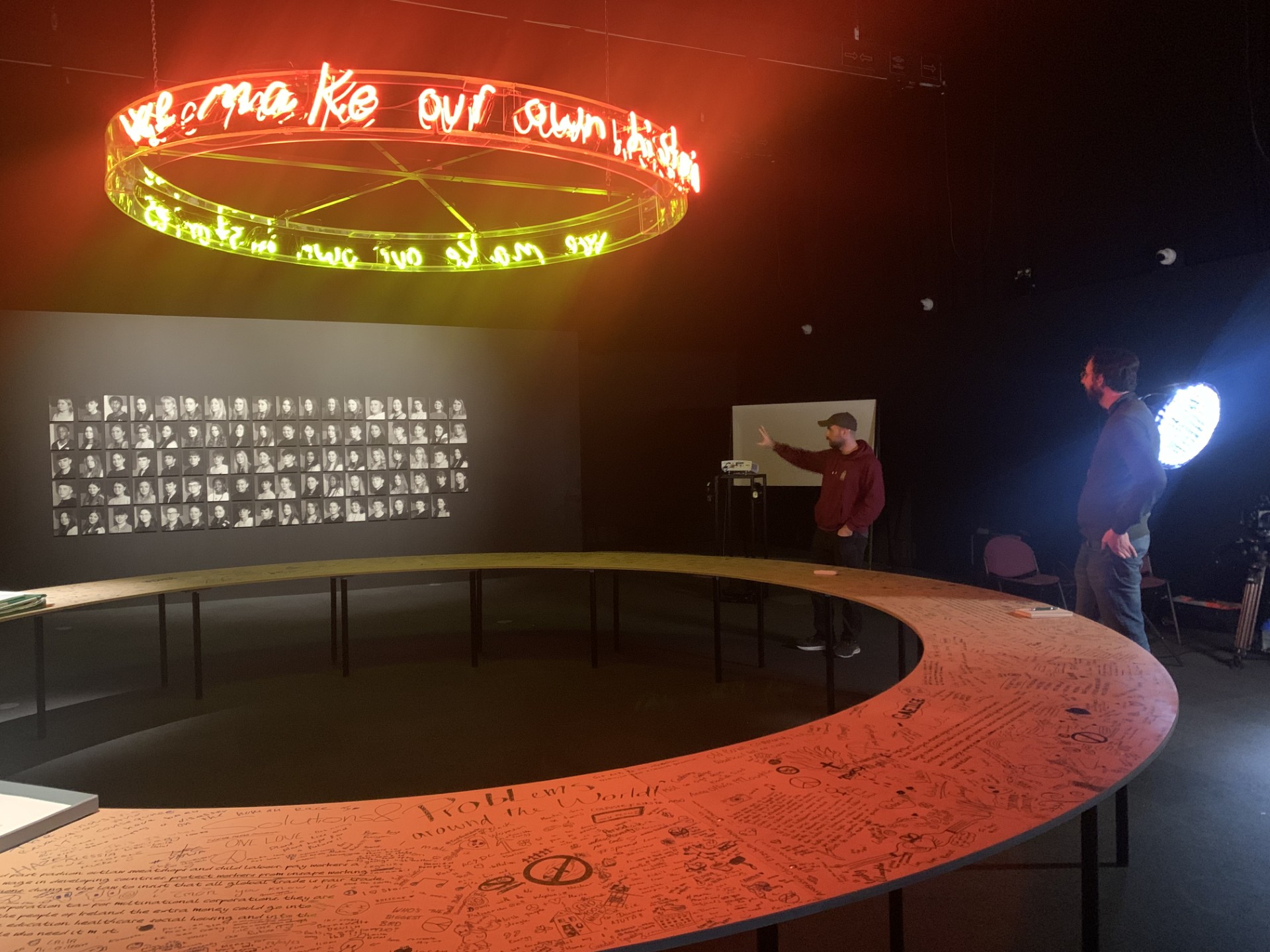
Diarmuid and Eamonn discuss where best to place the next interview. Eamonn’s directorial instinct leads him to settle on the wall of portraits of the participants in the Young People’s Assembly.
.jpg)
Our third interviewee, Vita Ryan, is welcomed to the space.

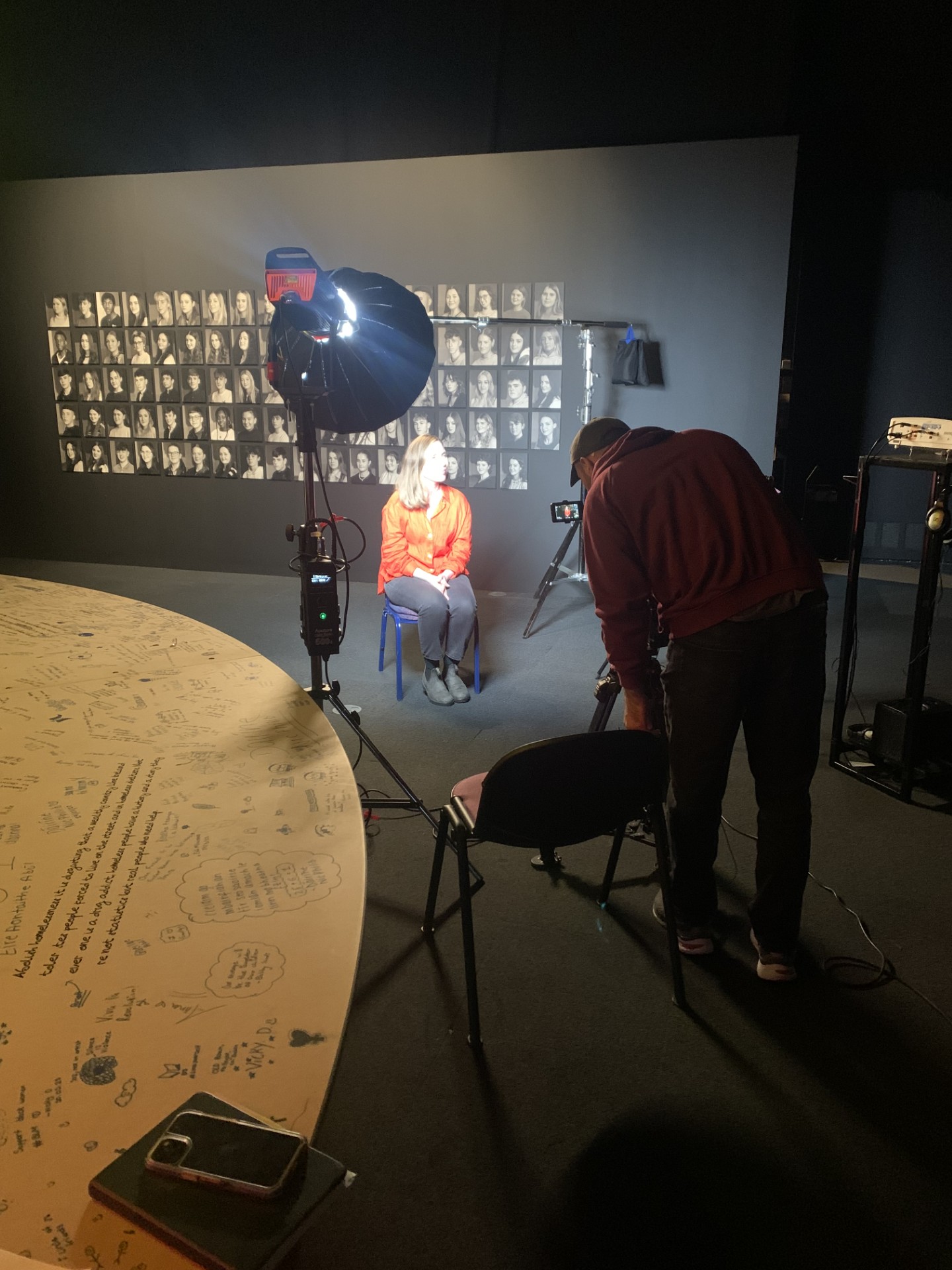
The set is moved over, the lighting is tested, and the cameras are checked. As anyone who works in the film and media industry can tell you, it takes time to get things set up. The lighting, the camera angles all have to work in tandem with one another. With all the equipment necessary to make a professional film, it can take close to an hour to move the set even a few paces and be ready again for shooting.

Everything is now ready and the interview begins. Vita, who works as an art teacher in Old Bawn Community School in Tallaght, is asked how her school came to be involved in the Young People’s Assembly project and what her students learned throughout the process. Vita, clear and concise with her answers, finishes her interview with time to spare.
Equipment breakdown
Cameras
Eamonn has a two-camera set up for the filming. One camera faces the subject in a static shot. The other camera is on a motorised slider to take a smooth, dynamic tracking shot. The static camera is a Sony FX6 and the panning camera is a Sony A7s III


Lights
Eamonn uses two lights on the subject. The bigger light is called an Aputure 600d and can shine up to 8,500 lux. At its brightest, it feels like staring directly at the sun.
The smaller light is called an Amaran T2c LED tube light which can change colour to give each scene its own distinct look.
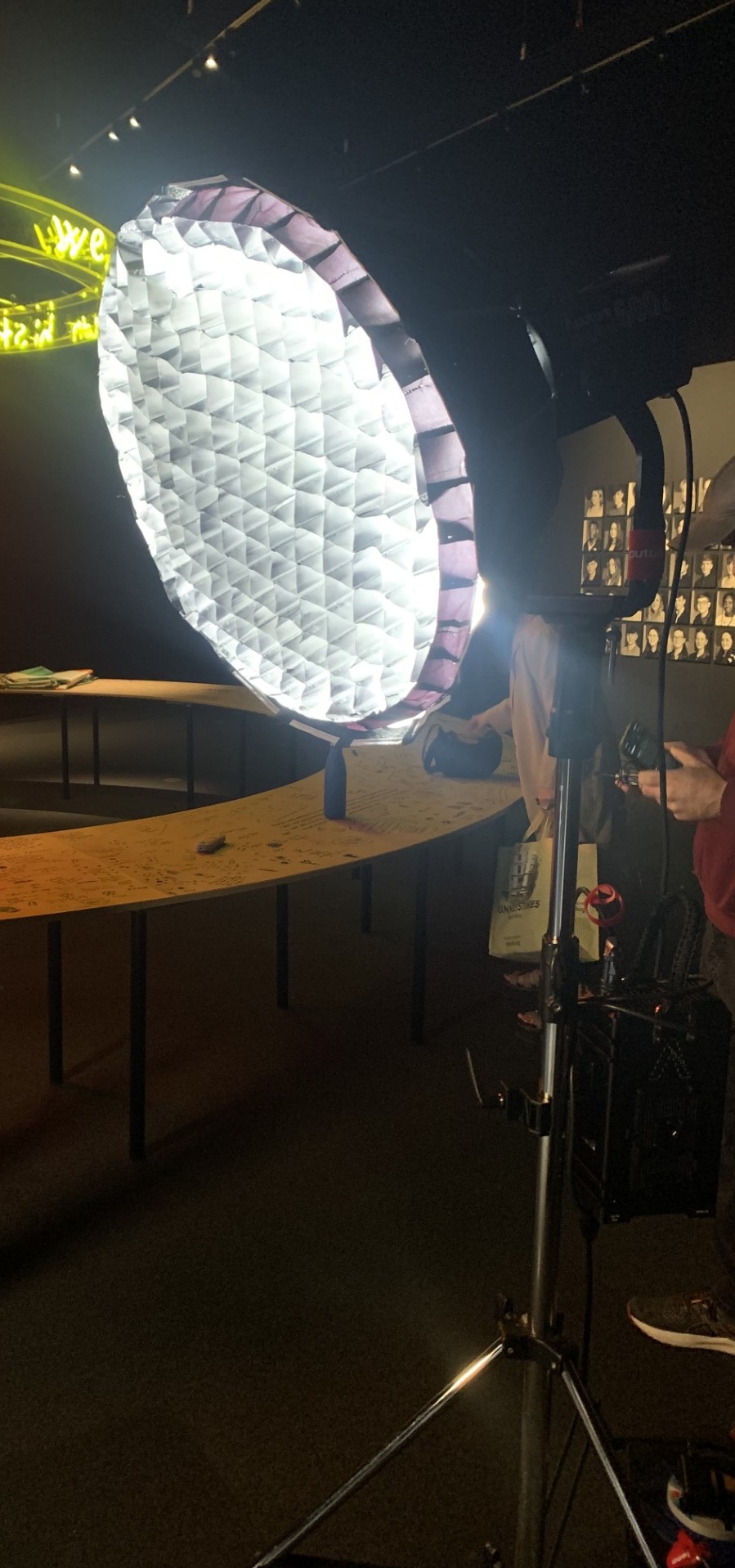

Diarmuid can be seen here adjusting the shade of the LED tube light to blue.
4th interview – 2pm
With no change in set up for our fourth and final interview of the day, we begin after lunch. In the hot seat is Helen Beaumont, Education Officer at Collins Barracks.
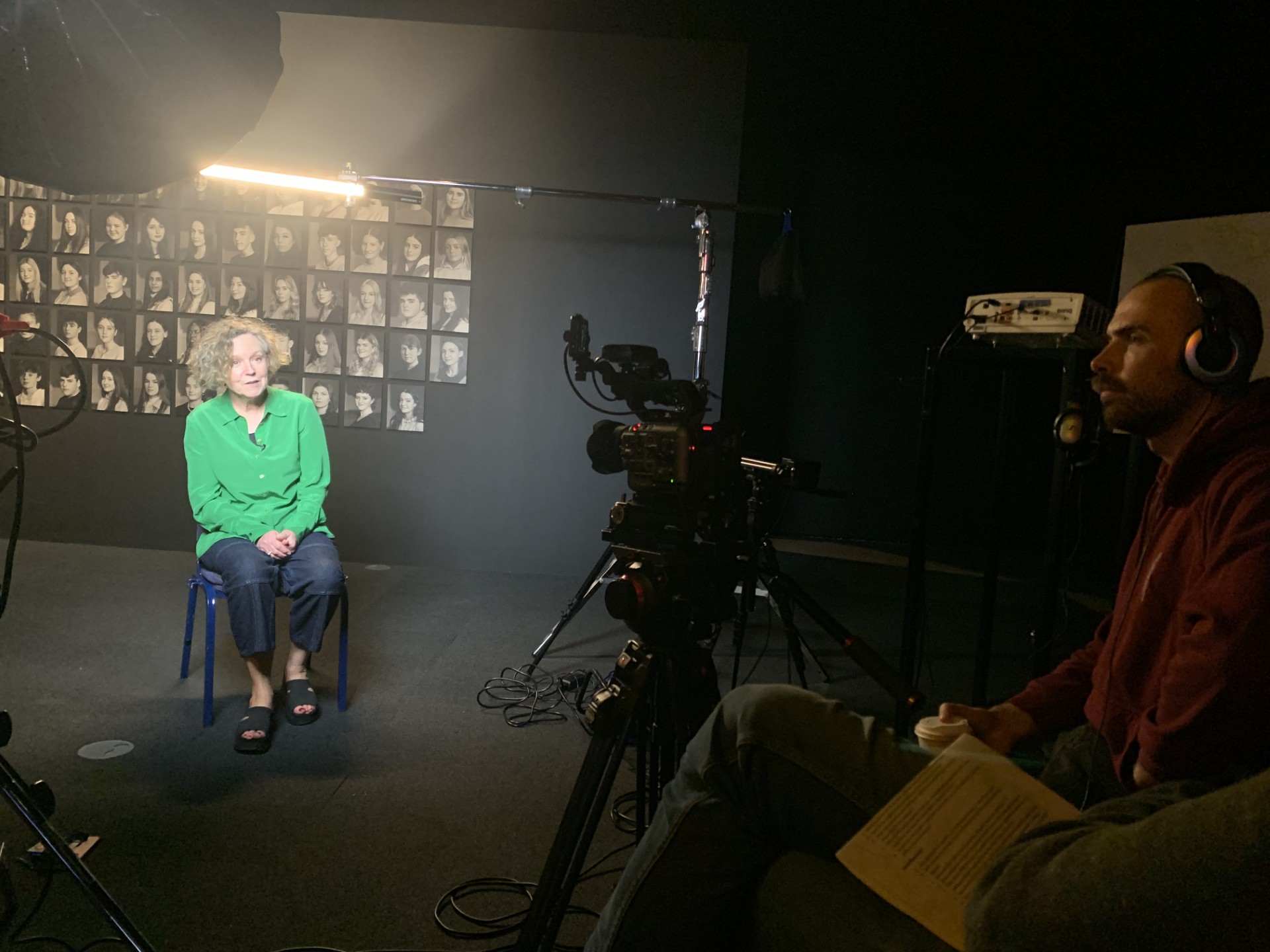
Having been heavily involved in the planning and support of the artist residency from the outset, Helen is asked about her overall reflections on the residency, the exhibition, and the importance of art and activism in today’s political climate.

With the final interview done and dusted, Diarmuid and Eamonn are happy as clams.
Clean-up - 4pm
The last thing to do is clear and pack away the equipment. While Eamonn is busy folding tripods and screwing lens caps, I ask him a few questions about his past work with the National Museum and the filming today.
What are your thoughts on this project?
“I had a lot of fun working with the Museum in documenting the work of Anthony Haughey, especially that this video will be shown to schools, that will be shown for years to come.”
Do you have a favourite project that you worked on with the National Museum?
“I really liked making Remember to Forget the Past. I thought it was a very cool project to work on. It was a very important piece to make in that it was the first time the Museum was opening its doors to those sorts of artefacts and actually engaging in a dialogue about colonisation, which a lot of museums tend to shy away from. I thought it was a very powerful and brave move by the Museum to do so.”
How do you approach interviewing people?
“My approach to interviewing people is to be as casual as possible. People become very conscious very quickly when they’re on camera. The best thing you can do is reassure them that it’s a normal conversation and pay as much attention to them as possible in terms of maintaining eye contact. Once you try and maintain eye contact, everything else starts to disappear and they start to feel a little less conscious and a little less in the spotlight and you get more genuine answers out of them.”
And when they’re speaking, do you nod or say ‘mm hmm’ or do you keep your face neutral?
“I like to make faces at them. I always nod almost in an exaggerated fashion because sometimes it’s hard to see because they have the light on them and I’m sitting in the dark. So it’s better to exaggerate your movements a little bit to really look like you’re concentrating on what they’re saying and reacting to what they’re saying. It just gives them more to feed off.”

Director Eamonn Murphy was born in Dublin, Ireland. His last film was nominated for Best Short Film at the Tribeca Film Festival in New York and was recently acquired for distribution on Disney+.
And that’s a wrap on the day!
Keep an eye out for the finished product on the National Museum of Ireland’s YouTube channel.
